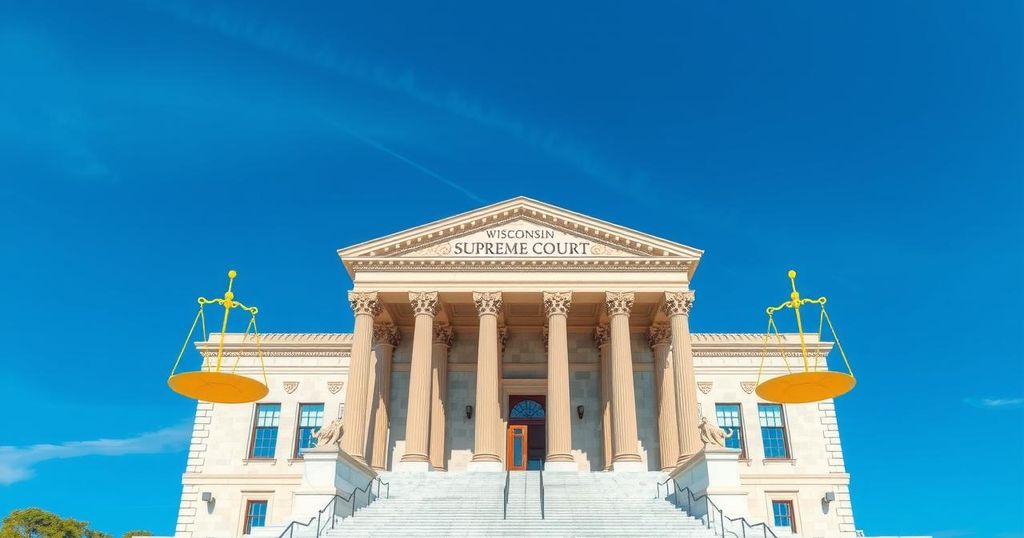Susan Crawford’s Victory in Wisconsin Supreme Court Race Maintains Liberal Majority

Susan Crawford’s victory in the Wisconsin Supreme Court race ensures a continued liberal majority, with funding from Elon Musk opposing her proving ineffective. The election marked historic spending levels and raised critical issues regarding abortion rights, redistricting, and labor laws. Democrats leveraged Musk’s influence as a campaign focal point, marking a strategic shift for future elections.
Susan Crawford has secured a seat on the Wisconsin Supreme Court, maintaining a liberal majority despite significant funding opposition from Elon Musk, who invested millions to support her opponent, Brad Schimel. This election marked the most expensive state Supreme Court race in U.S. history, occurring during President Trump’s second term and drawing national focus due to its implications for pivotal issues like abortion rights and redistricting.
Crawford, a circuit judge from Dane County, won a 10-year term over Schimel, a Republican circuit judge and former attorney general, emphasizing her backing by Democrats. The results pose a setback for Trump, who endorsed Schimel, while Musk actively participated, visiting Wisconsin and voicing support for Schimel on social media.
Crawford’s victory preserves a narrow 4-3 liberal majority on the court, crucial as it will address cases on abortion rights, union rights, and state congressional maps. Despite Musk’s funding exceeding $15 million, Democratic-aligned groups managed a slight ad spending advantage, effectively countering Musk’s influence in campaign strategies.
Democrats frequently criticized Musk during the campaign, portraying him as attempting to manipulate the election. Events like the “People v. Musk” town-hall tour highlighted their position against Musk’s significant financial involvement, while also addressing his ongoing legal conflicts in Wisconsin.
In contrast to aggressive references to Trump by Schimel, Democrats distanced themselves from the Trump narrative. Schimel’s late-campaign strategy involved amplifying his association with Trump in hopes of increasing conservative voter turnout, which included attending events and running ads featuring Trump.
Each candidate attempted to discredit the other on crime issues, although these rarely intersected with Supreme Court responsibilities. Crawford’s campaign successfully highlighted Schimel’s handling of rape kit management allegations while also promoting her stance on reproductive rights central to her messaging.
The future court caseload is expected to address crucial cases, notably the 1849 abortion ban expected to be overturned, alongside potential rulings on public workers’ collective bargaining and congressional district redrawing. Following recent liberal gains, the majority’s strength will influence policymaking significantly over the next few years.
Crawford’s victory in the Wisconsin Supreme Court election not only extends the liberal majority but also highlights significant tensions between political interests, particularly Musk’s involvement. Essential legal issues surrounding abortion, labor rights, and electoral maps await adjudication, reaffirming the court’s crucial role in shaping state policy. With future elections scheduled, the strategies observed may inform upcoming campaigns and political dynamics.
Original Source: www.nbcnews.com




